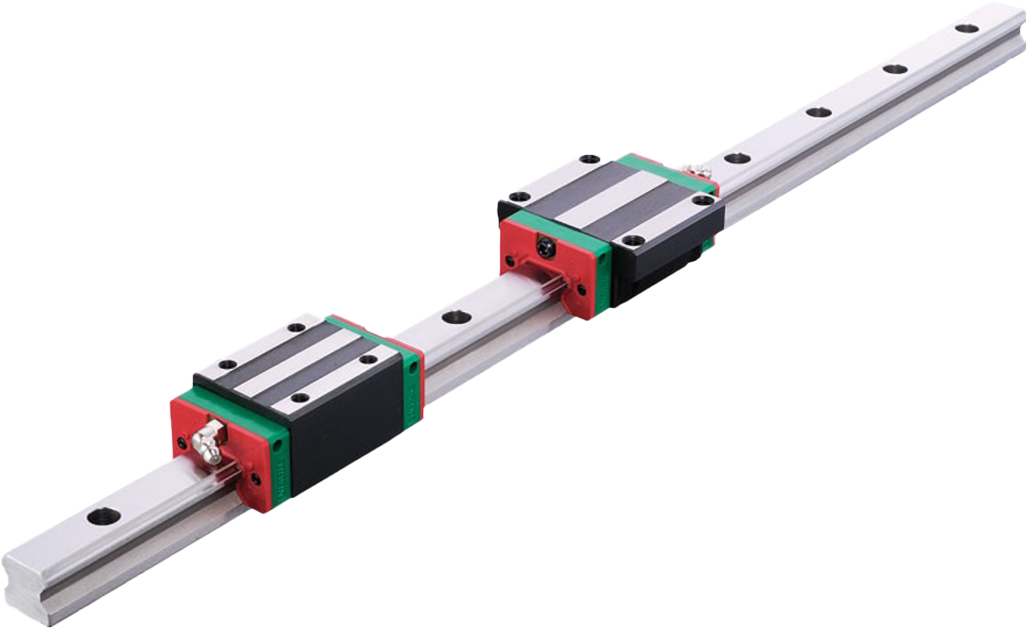Linear motion guides are an essential component of modern engineering and manufacturing processes. These devices enable precise linear motion with low friction and high accuracy, making them ideal for a wide range of applications. In this blog, we will explore the basics of linear motion guides and their various types, applications, advantages, and limitations.
What are Linear Motion Guides?
Linear motion guides are mechanical devices that enable linear motion with high accuracy and low friction. They consist of a rail or track and a slider or carriage that moves along the rail. The rail and slider have precision-ground surfaces and are made of materials with high hardness and stiffness, such as steel or aluminum.
How do Linear Motion Guideways work?
Linear motion guideways work on the principle of rolling or sliding contact between the rail and the carriage. The rail is either equipped with balls or rollers that roll between the rail and the carriage or uses a sliding contact between the rail and the carriage. The carriage slides along the rail with minimal friction, providing smooth and precise linear motion.
Features of LM Guides
LM Guides consist of three main components: the main structure (rail and block), the ball circulation system (balls, lower and upper retainers, and end caps), and dust protection components (end seals). The rail and block are designed with a circular arc groove with contact points at 45 degrees, which enables the LM Guide to absorb most installation errors due to surface irregularities and provide smooth linear motion. LM Guides are durable and can withstand a wide range of loads, depending on the application. The ball bearings in the block minimize friction between the rail and the block, allowing for higher accuracy. Additionally, equal loading in four directions and sufficient preload provide high rigidity to the LM Guide. Linear motion guides are available in various types, each designed for specific applications and operating conditions. Some common types of linear motion guides include:
1. Ball Guides
Ball guides are the most common type of linear motion guides. They use steel balls to reduce friction and enable smooth linear motion. The steel balls are housed in a cage that rolls along the rail, reducing friction and increasing accuracy.
2. Roller Guides
Roller guides are similar to ball guides but use rollers instead of balls. The rollers have a larger contact area than balls, making them ideal for heavy-duty applications.
3. Magnetic Guides
Magnetic guides use magnetic fields to create a levitation effect that enables frictionless linear motion. They are ideal for high-speed and precision applications.
4. Air Guides
Air guides use compressed air to create a cushion of air that enables frictionless linear motion. They are ideal for cleanroom and vacuum applications.
Applications of Linear Motion Guides
Linear motion guides are used in a wide range of applications, including:
1. CNC Machines
Linear motion guides are used in CNC machines to enable precise linear motion of cutting tools, ensuring high accuracy and quality of the finished product.
2. Robotics
Linear motion guides are used in robotic arms and other robotic components to enable precise linear motion and positioning.
3. Semiconductor Manufacturing
Linear motion guides are used in semiconductor manufacturing equipment to enable precise linear motion and positioning of wafers and other components.
4. Medical Equipment
Linear motion guides are used in medical equipment such as CT scanners and MRI machines to enable precise linear motion and positioning of the patient.
Advantages of Linear Motion Guides
Linear motion guides offer several advantages over other types of linear motion devices, including:
1. High Accuracy
Linear motion guides enable high accuracy and precision in linear motion, ensuring that the finished product meets the required specifications.
2. Low Friction
Linear motion guides have low friction, reducing wear and tear and increasing the lifespan of the device.
3. High Load Capacity
Linear motion guides can handle high loads, making them ideal for heavy-duty applications.
4. Smooth Operation
Linear motion guides enable smooth and quiet linear motion, reducing noise and vibrations.
Limitations of Linear Motion Guides
Linear motion guides also have some limitations, including:
1. Cost
Linear motion guides can be expensive compared to other types of linear motion devices.
2. Maintenance
Linear motion guides require regular maintenance, including cleaning and lubrication, to ensure optimal performance and lifespan.
3. Size and Weight
Linear motion guides can be bulky and heavy, making them unsuitable for some applications with limited space.
Conclusion
Linear motion guides are essential components of modern engineering and manufacturing processes. They enable precise linear motion with low friction and high accuracy, making them ideal for a wide range of applications. By understanding the basics of linear motion guides and their various types, applications, advantages, and limitations, engineers and manufacturers can select the most suitable linear motion guide for their specific needs and requirements. At Balaji Engineering Works, we understand the importance of high-quality LM Guides. Hence, we only supply premium quality LM Guides that are designed to provide optimal performance and durability


